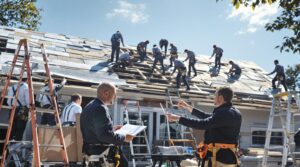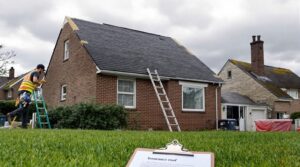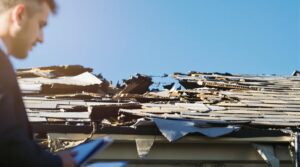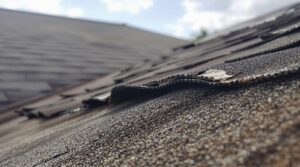Wondering how long you'll need to wait for your roof claim to get sorted? Let's break it down in real-world terms!
Think of a roof claim like a well-choreographed dance – each step needs to happen in the right order. Most homeowners see their claims wrapped up in about two to four weeks, though your mileage may vary depending on your insurance provider.
Tech-savvy insurance companies are leading the pack, typically processing claims in about 15 days – almost twice as fast as their traditional counterparts who clock in around 28 days. It's like comparing express shipping to standard delivery!
Here's what your claim journey typically looks like:
- First steps: Filing your claim (1-3 days)
- Inspection time: Meeting with an adjuster (5-10 days)
- Behind the scenes: Claim review process (7-15 days)
- Final stretch: Payment processing (1-5 days)
Mother Nature can throw a wrench in the works, though. During widespread disasters or severe weather events, expect the timeline to stretch to about 34 days as adjusters handle multiple claims.
Want to speed things up? Keep your documentation ready, respond promptly to your adjuster's requests, and stay in regular contact with your insurance provider. Think of it as being the perfect dance partner – when you're in sync with your insurer, everything moves more smoothly!
Remember, every insurance company marches to its own drum, so it's worth asking about their specific timeline expectations when you file your claim.
Key Takeaways
Wondering How Long Your Roof Claim Will Take? Let's Break It Down!
Think of a roof claim like a well-orchestrated dance – it's got its own rhythm and timing. While most claims wrap up in about 14-30 days, your journey might be shorter or longer depending on several factors.
Tech-savvy insurance carriers are changing the game, just like streaming changed how we watch TV. Digital insurers typically get you sorted in about 15 days, while traditional companies might take closer to a month to process everything.
The big players in the insurance world, like USAA and State Farm, have streamlined their processes to get you back under a solid roof faster. But here's the thing – when Mother Nature throws a curveball (think major storms or disasters), everyone's scrambling for help, and processing times can stretch to over a month.
Want to maximize your claim? Some homeowners bring in a public adjuster – kind of like having a personal advocate in your corner. While this might add a bit more time to the process, it could mean a better settlement in the end.
Quick Tips to Speed Things Up:
- Document everything (photos are your best friend)
- Respond promptly to your adjuster's requests
- Keep a paper trail of all communications
- Stay proactive in following up
Remember, every roof claim tells its own story, and yours might not follow the exact timeline of others. The key is staying informed and engaged throughout the process! Additionally, it’s essential to document any damage thoroughly and maintain open communication with your insurance adjuster. When filing an insurance claim for roofing, be sure to provide all necessary information and follow up regularly to ensure your claim is progressing smoothly. By taking proactive steps, you can help ensure that your roof is restored as efficiently as possible.
The Average Timeline for Processing a Roof Insurance Claim
Most roof insurance claims follow a structured timeline that typically spans 14 to 30 days from initial reporting to final payment disbursement. The processing duration consists of several distinct phases, beginning with damage reporting, which usually takes 1-3 days. Insurance adjusters conduct their inspections within 5-10 days of the initial report.
Timeline variables can substantially impact the overall processing duration. The claim review and approval phase typically requires 7-15 days, during which adjusters assess damage severity and verify coverage details.
Once approved, payment disbursement generally occurs within 1-5 days. This standardized process guarantees thorough evaluation while maintaining efficiency, though actual durations may vary based on claim complexity, insurance company procedures, and external factors such as storm-related claim surges. Working with public insurance adjusters can accelerate the claims process while potentially increasing settlement amounts by 20-50%.
Key Steps in the Roof Claim Process

Understanding the key steps in a roof claim process helps homeowners navigate the complex procedure with confidence and efficiency. The process begins with a thorough damage assessment, including photographic documentation and thorough inspection of the roof's condition. Homeowners must review their insurance policy details and obtain professional estimates from qualified contractors.
The next phase involves filing the claim and coordinating with the insurance company for an adjuster inspection. Contractor communication becomes vital during this stage, as having a roofing professional present during the adjuster's visit can substantially impact the claim's outcome.
The process concludes with negotiating the settlement, selecting a contractor for repairs, and finalizing the claim through proper documentation and payment verification with the insurance provider. Working with public insurance adjusters can increase settlement amounts by up to 800% compared to filing independent claims.
Factors That Can Speed Up or Delay Your Claim
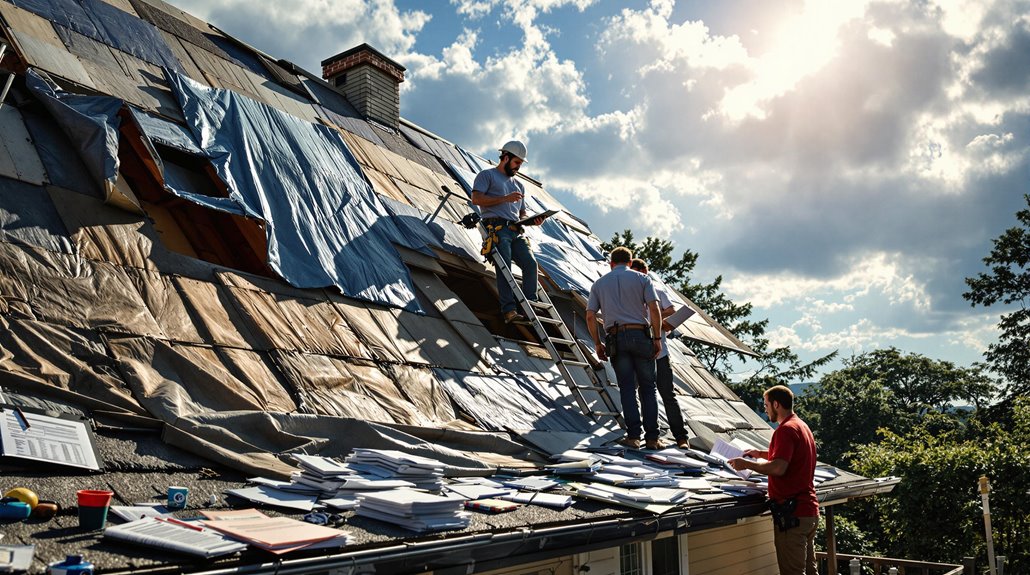
The time required to process a roof insurance claim depends on several controllable and uncontrollable factors that can either accelerate or impede the process.
Factors that expedite claims include prompt damage reporting, thorough documentation with photos and estimates, clear communication with adjusters, and assistance from experienced contractors.
Conversely, delays commonly stem from gradual damage assessment requirements, incomplete documentation, slow response times, insurance company procedures, and external factors like contractor availability or post-storm claim surges.
Working with public adjusters increases settlement amounts by 30-50% while helping navigate complex roof damage claims.
Keys to Faster Claims
Several key factors directly influence the speed and efficiency of a roof insurance claim process, from the initial documentation to the final payout. Quick documentation through photos, videos, and detailed descriptions enables adjusters to assess damage accurately, while efficient communication with insurance representatives prevents unnecessary delays.
To expedite claims, homeowners should obtain multiple repair estimates from qualified contractors and promptly respond to all insurance company requests.
Selecting contractors experienced in insurance claims can streamline the process, as they understand documentation requirements and industry standards. Modern technology, such as drone-based assessments, can provide precise damage evaluations more rapidly than traditional methods.
Additionally, thorough understanding of policy terms and maintaining organized records of all insurance-related interactions substantially reduces processing time. Working with public adjusters can optimize insurance claim settlements by 30-50% through their specialized knowledge and strategic negotiations.
Major Causes of Delays
Various critical factors can substantially impact the duration of roof insurance claims, ranging from uncontrollable weather conditions to complex policy requirements and contractor-related challenges. Weather complications can halt project progress, requiring additional drying time and affecting material application.
Material shortages and supply chain disruptions frequently cause delays in delivery and installation schedules.
Insurance-related delays stem from strict documentation requirements, policy exclusions, and thorough claim verification processes. Claims must be filed within specified timelines and include detailed evidence of damage.
Additionally, contractor factors such as project scope misestimations and hidden structural damages can extend timelines. The permitting process introduces further delays, as proper documentation and approvals are required before work can commence.
Working with public adjusters can increase settlement amounts by 30-50% but may extend the overall claims timeline.
Different Insurance Companies and Their Processing Times

Insurance companies vary substantially in their roof claim processing timeframes, with USAA offering the fastest resolution at 10-20 days while Liberty Mutual typically requires 25-35 days.
State Farm, Allstate, and Nationwide fall within the industry average, processing most claims within 14-30 days. These processing durations reflect each insurer's internal procedures, claim volume management capabilities, and verification protocols. Claims involving storm damage repairs typically receive settlements averaging $8,000 and are processed more quickly when proper documentation is provided.
Leading Insurers' Time Frames
Leading property insurers maintain distinct processing timelines for roof claims, with durations ranging from 10 to 35 days depending on the company.
Among major insurers, processing times vary substantially, reflecting their internal procedures and regional variations in claim volume:
- USAA demonstrates the fastest processing window at 10-20 days, making it remarkably efficient for roof claims
- State Farm and Nationwide operate within a moderate timeframe, averaging 14-25 days for claim resolution
- Allstate typically requires 20-30 days to process roof claims through their system
- Liberty Mutual extends to the longest processing period at 25-35 days for complete claim resolution
These timeframes represent standard processing periods, though actual duration may fluctuate based on claim complexity, documentation completeness, and local weather conditions affecting inspections.
Working with a public claims adjuster can increase settlement amounts by up to 800% while adding 10-15% to processing time.
Processing Duration Comparisons
Major property insurers consistently demonstrate significant variations in their roof claim processing durations, with cycle times ranging from 15 to 60 days depending on the carrier's operational efficiency and claim complexity. Timeline variations are particularly evident between carriers utilizing digital tools, achieving average completion times of 15 days, compared to traditional processors averaging 28 days.
Processing efficiency metrics reveal that catastrophic event claims typically extend to 34.2 days, while standard claims average 23.9 days across insurers.
Digital adoption has created notable disparities in processing speeds, though customer satisfaction data indicates diminishing returns after 31 days. Analysis shows that carriers maintaining proactive communication channels and streamlined documentation requirements achieve more consistent processing times, regardless of their technological implementation level.
Public adjuster services can significantly improve claim processing times by providing expert navigation through complex documentation requirements and maintaining consistent communication with insurers.
Claims Timeframe By Provider
Several prominent insurance carriers exhibit distinct processing timelines for roof claims, with USAA demonstrating the fastest resolution window of 10-20 days, while Liberty Mutual typically requires 25-35 days for completion.
Provider comparison reveals significant timeline variations across major insurers:
- State Farm maintains a moderate processing window of 15-20 days, positioning them as an efficient mid-range provider
- Allstate's timeline extends to 20-30 days, reflecting their thorough review process
- Nationwide operates within a 14-25 day range, offering variable processing speeds based on claim complexity
- USAA's expedited timeline suggests optimized internal processes, while Liberty Mutual's longer window indicates a more detailed evaluation approach
These timeframes can fluctuate based on factors such as storm events, documentation completeness, and contractor availability.
Maintaining open communication with insurer throughout the claims process can significantly reduce delays and expedite the overall timeline for roof replacement approval.
Essential Documentation and Requirements for Roof Claims
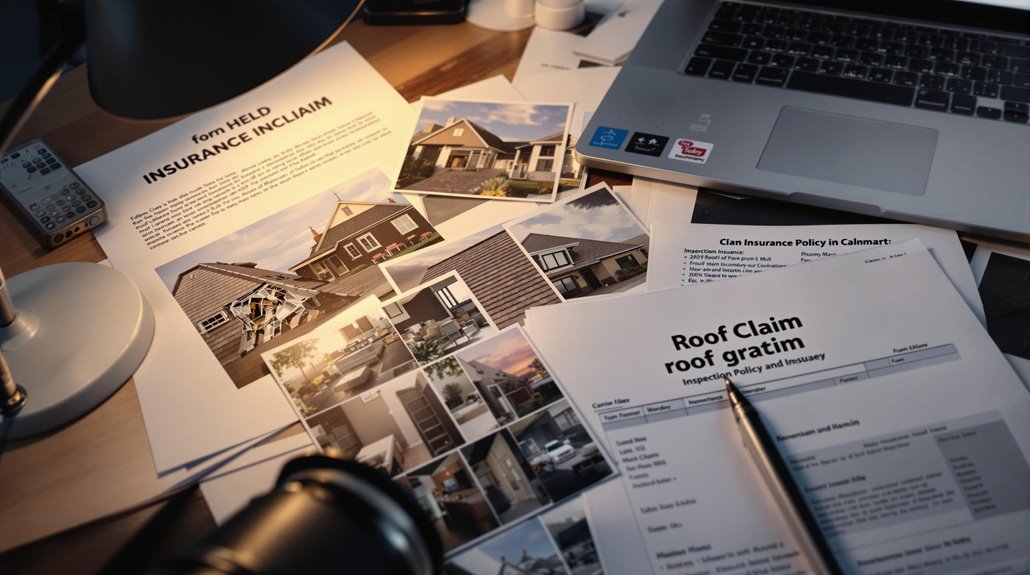
The documentation phase stands as a critical foundation for any successful roof claim, requiring property owners to gather thorough evidence and paperwork that substantiates their case.
Document preparation involves collecting complete photographic evidence, including time-stamped images from multiple angles and lighting conditions, along with before-and-after comparisons of the damaged areas.
Paperwork organization encompasses professional inspection reports detailing the extent of damage, recommended repairs, and cost breakdowns. Property owners must maintain detailed records of all estimates, receipts for temporary repairs, and material costs.
Additionally, the claim file should include copies of the insurance policy, all correspondence with adjusters, and a chronological record of the claim's progression. These elements form the essential documentation package that expedites the claims process.
Working with public adjusters can increase settlement amounts by up to 800% while providing expertise in documentation requirements and claims management.
Strategies to Ensure a Quick and Successful Claim
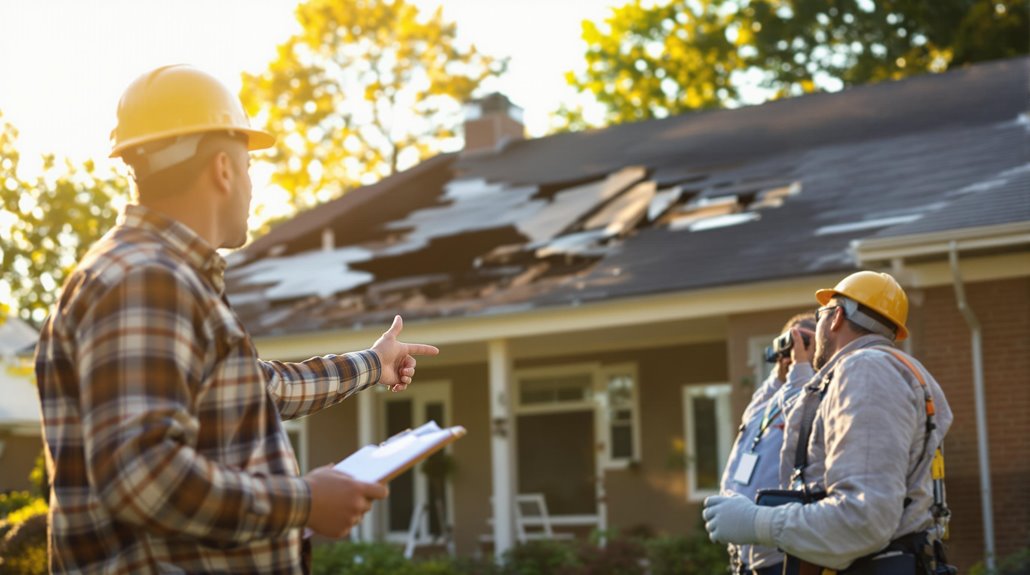
Implementing proven strategies can dramatically accelerate the roof claim process and improve outcomes for property owners.
Success hinges on maintaining Organized Records of all claim-related activities and collecting thorough Photographic Evidence immediately after damage discovery.
Effective execution requires a systematic approach to documentation and communication with insurance providers.
- Submit initial damage reports within 24-72 hours, accompanied by detailed photos and videos documenting all affected areas
- Obtain multiple contractor estimates promptly and guarantee they are readily available for insurance review
- Maintain precise documentation of all communications with adjusters and insurance representatives
- Schedule inspections immediately and follow up regularly with the insurance company while monitoring claim progress through each stage
These methodical steps, combined with thorough preparation, substantially enhance the likelihood of swift claim resolution.
The Benefits Of Consulting A Public Adjuster

Consulting a public adjuster provides significant advantages during the roof claim process through their specialized expertise in insurance policies and objective damage assessment capabilities.
Their professional involvement helps streamline the claims process by managing documentation, negotiations, and policy interpretation while maintaining an unbiased perspective focused on the homeowner's interests.
Public adjusters typically secure higher claim settlements by leveraging their knowledge of insurance industry practices and ensuring all damage is properly documented and valued.
Expertise In Insurance Claims
Professional guidance from a public adjuster can substantially enhance the outcome of a roof insurance claim through their specialized expertise and industry knowledge.
Their professional oversight guarantees proper claim handling while their extensive understanding of policy terms and regulations maximizes potential settlements.
- Public adjusters possess specialized knowledge of insurance documentation requirements, guarantees accurate and thorough claim submissions
- They conduct detailed assessments of roof damage, collecting essential evidence and documentation to support the claim
- Their expertise in policy interpretation helps identify all applicable coverage and additional benefits
- Through skilled negotiation techniques, they advocate for fair settlements while maneuvering complex insurance processes
This technical proficiency often results in more favorable outcomes compared to policyholder-managed claims, while reducing processing time and administrative burden.
Objective Damage Assessment
An objective damage assessment performed by a public adjuster serves as the cornerstone of a successful roof insurance claim. Their systematic approach involves exhaustive documentation through detailed photographs, weather data analysis, and evaluation of surrounding property damage to establish claim validity.
The damage evaluation process includes thorough interior and exterior inspections to identify key indicators of severe damage, such as persistent leaks, sagging structures, or deteriorated shingles.
Public adjusters utilize professional assessment techniques to determine the root cause of damage, considering factors like age-related wear, weather events, and pre-existing conditions. Their expertise enables accurate assessment of contractor estimates and necessary repairs, ensuring all aspects of damage are properly documented and supported by evidence for the insurance claim process.
Streamlined Claim Process
When homeowners engage public adjusters for roof claims, they gain access to a streamlined process that substantially reduces administrative burden and maximizes settlement potential.
Through efficient documentation management and process automation, public adjusters transform complex claims into organized procedures.
- Documentation is systematically collected, including detailed photographs, repair estimates, and thorough damage reports
- Insurance policy analysis guarantees compliance with specific requirements and identifies potential coverage limitations
- Communication channels are centralized, with adjusters managing all interactions and negotiations with insurance providers
- Timeline management is optimized through precise scheduling, deadline tracking, and prompt response to information requests
This systematic approach considerably reduces processing time while guaranteeing thorough claim documentation, ultimately leading to more favorable settlement outcomes for homeowners.
Higher Claim Payouts & Settlements
Public adjusters consistently deliver higher claim payouts and settlements compared to policyholder-managed claims, with studies indicating substantially increased compensation amounts. Through detailed payout analysis and settlement optimization techniques, these professionals leverage their expertise in damage assessment and policy interpretation to maximize claim values.
Their exhaustive approach includes thorough documentation of all damages, expert negotiation with insurance companies, and strategic presentation of evidence.
Public adjusters utilize their knowledge of roofing materials, repair costs, and industry standards to identify often-overlooked damages. Their understanding of insurance company tactics enables them to counter minimization attempts effectively.
About The Public Claims Adjusters Network (PCAN)
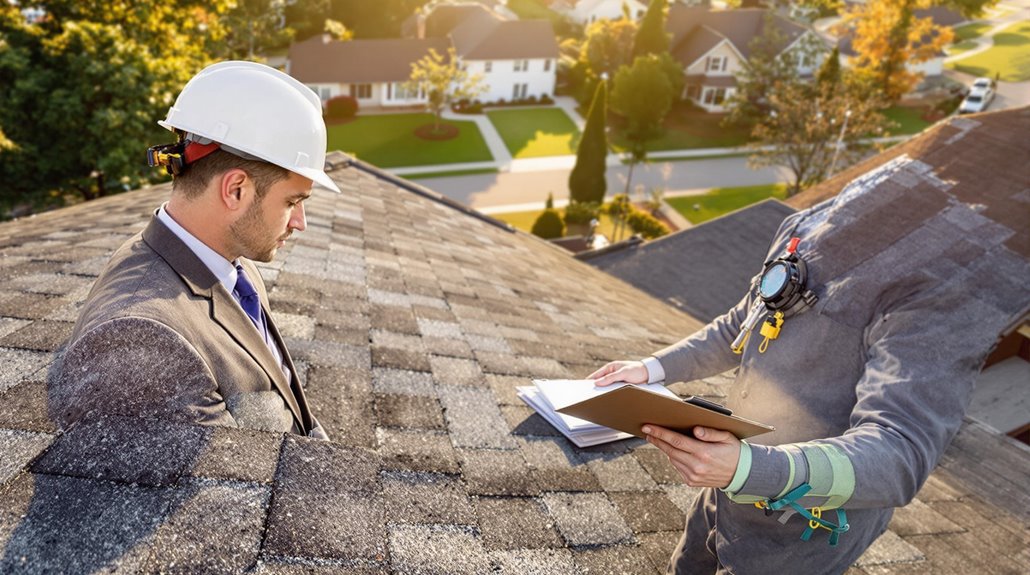
The Public Claims Adjusters Network represents a nationwide organization of licensed professionals who advocate exclusively for policyholders during insurance claims.
Through its Network Operations spanning all 50 states and Global Partnerships across 10 international offices, PCAN delivers thorough support throughout the claims process.
- PCAN professionals specialize in policy interpretation, damage assessment, and settlement negotiations for both residential and commercial properties
- Unlike insurance company adjusters, PCAN representatives maintain complete independence, ensuring unbiased evaluations
- The organization streamlines communication between policyholders, insurance companies, and contractors
- Professional adjusters document damages, prepare necessary paperwork, and manage negotiations to expedite claim resolution
This systematic approach enables PCAN to secure maximum settlements while reducing stress for policyholders during the claims process.
Frequently Asked Questions
Can I Stay in My Home During Roof Repairs?
While temporary shelter may be advisable, occupants can remain home during roof repairs by implementing indoor protection measures, maintaining clear communication with contractors, and following safety protocols throughout the process.
Will Filing a Roof Claim Increase My Insurance Premiums?
Filing a roof claim typically impacts premium calculations, potentially leading to coverage adjustments. The extent of increase depends on claim history, severity, and individual insurance company policies.
How Often Can I File a Roof Claim?
Insurance policies typically don't specify claim frequency limitations, but each roof claim undergoes individual evaluation based on coverage terms. Multiple claims within short periods may impact policy status or premiums.
What Happens if My Roofing Contractor Finds Additional Damage?
When contractors discover hidden damage, they document findings, notify insurers, and submit supplemental claims. This process may include necessary material upgrades and additional coverage adjustments through updated assessments and documentation.
Should I Get My Roof Repaired Before Filing an Insurance Claim?
Rushing repairs before filing could catastrophically jeopardize claims. Homeowners should only perform emergency temporary fixes while documenting damage, waiting for proper inspection completion and paperwork filing through insurance channels.
References
- https://litespeedconstruction.com/how-long-does-the-insurance-company-take-to-process-a-roof-claim/
- https://www.billraganroofing.com/blog/things-need-know-about-insurance-process-roof-damage
- https://integrityroofingandpainting.com/insurance-roof-replacement-take/
- https://www.insurance.com/home-and-renters-insurance/coverage/how-long-does-an-insurer-have-to-pay-my-claim.aspx
- https://firstamericanroofing.com/how-long-to-file-claim-for-roof-damage/
- https://www.restorationroofing.com/how-long-do-i-have-after-an-incident-to-file-a-roof-claim/
- https://vanguardgc.com/factors-that-determine-your-roof-insurance-claim-coverage/
- https://www.lanelaw.com/insurance-claim-denied/blog/your-guide-to-understanding-the-roof-insurance-claim-process
- https://www.omarochoalaw.com/blog/roof-insurance-claim-process-in-texas
- https://roofingrenovationstn.com/8-steps-to-filing-an-insurance-claim-for-your-roof/


